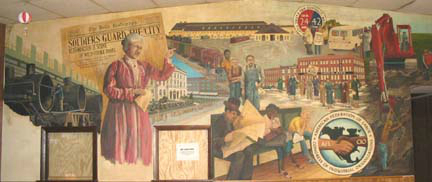|
Food in the Gilded Age: What Ordinary Americans Ate, by Robert Dirks
If we go back 100-plus years ago, what did our grandparents and great-grandparents eat, before the days of golden arches, microwaves and frozen pizza?
With a scrupulous look at early diet research, retired Illinois State University anthropologist Rob Dirks reconstructed the food ways of America’s workers.
There are many things we might expect, but some surprises here too.
Nutrition was an emerging science in the late 1890s. Dirks uses home visits by researchers, not cookbooks, to verify what people ate and what was available seasonally.
People in rural communities often had the least variety in their diet, with very seasonal choices. Dirks examines rural Mexican-Americans, Appalachian whites and rural African-Americans to find often very limited diets.
Income and work availability also influenced what was on the table.
There are some surprises here. Italian immigrants spent more on food than their working class neighbors, as they preferred imported olive oil and foods treasured from their homeland.
Northern African-Americans did not eat “soul food,” but rather a very similar diet to their urban white neighbors. In Ireland, bacon, not corned beef, was the Irish staple; corn beef was reserved for special occasions. But in the U.S., Irish families often celebrated their prosperity by eating holiday food - corned beef -- much more frequently.
This book roams from college dormitories to lumber camps to Chinese agricultural workers. In the sex segregated college dorms, young women ate butter-rich diets, hoping to gain that attractive “pleasingly plump” figure that stick-thin college girls today would abhor.
College men ate a meat heavy diet, while Maine lumberjacks stuffed themselves with beans and high carbohydrate foods, to withstand rugged conditions and bitter cold.
How our working class ancestors ate opens a window to a feast or famine world, where hunger often haunted the door and steady work brought a tasty reward.
Reviewed by Mike Matejka
Rowman & Littlefield
ISBN 978-1-4422-4513-6
|



